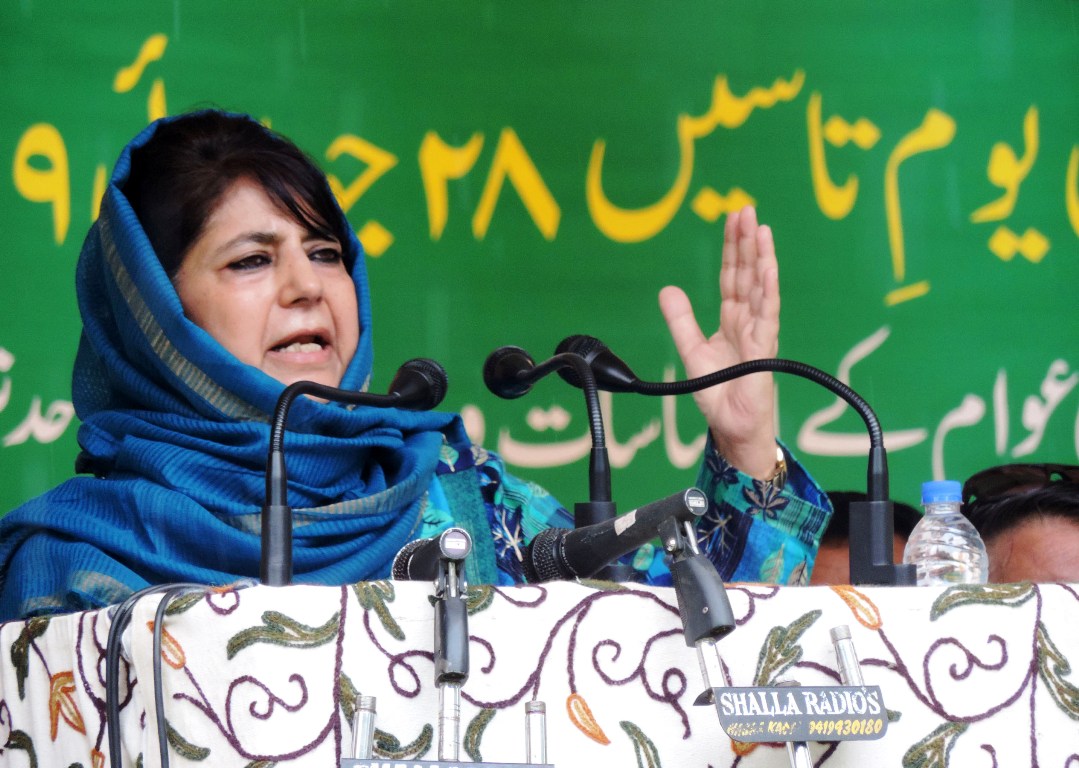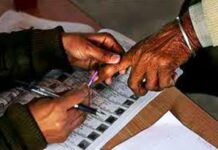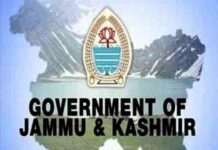SRINAGAR: Last week, Kashmir lost the valley’s celebrated professional Kundangar (gold engraver), Mohammad Amin. He passed away at his Lal Bazar home on January 17. He was 96.

Kundangari is one of the most intricate art forms and the family knew the art for generations. Their artwork was so impressive that the British Royal Air Force has hired them for creating some intricate designs which still part of the Force’s heritage.
Commentator Zahid GM who has known the family from his childhood when Kunadangars’ lived in Daribal belt of Kahnyar said with the demise of Mohammad Amin, the art of gold engravings has died, literally. “Besides, being an artist par-excellence and oldest surviving calligrapher of Arabic and Persian, he was a close witness to political happenings in the state from 13 July 1931- the Kundanagar House has been the epicentre of the freedom struggle,” Zahid wrote.
Zahid has written that Mohammad Baba, the ancestor of the family had arrived into Kashmir, with the caravan of Syed Ali Hamadani and settled around Khanaqah-i-Moula. “It was Nazim-u-Din, third generation artisan of the family who perfected the art of gem-studded engraved gold jewellery and the family name changed from Baba to Kundan Gar – the gold engravers,” according to Zahid. “The artefacts produced by the family found a way into the royal courts. And the art passed on from generation to generation. During the nineteenth and twentieth centuries, the ‘Kundan’ jewellery became very popular with the wealthy and ‘big landed estate’ families – both Hindus and Muslims.”
“The great artefacts crafted by the four brothers Ghulam Ahmad, Ghulam Mohidin, Maqbool Hussain and Mohamad Amin and their father Ghulam Ahmad for more than a century and a half, are to this day priced possession of some wealthy families of Kashmir, and Amin Sahib remembered almost names of the families that visited their workplace,” Zahid, who had conducted four interviews with Mohammad Amin, albeit for political history, wrote. “The commonly used jewellery of those times Jigni, Ticka, Taweez, bracelets and, Jumka and Holidal after they were studded with gems and engraved by skilful hands of turned into rare masterpieces. Some holidall Kundan with holy verses engraved and embellished with gems and precious stones are rarest of masterpieces of gold art of Kashmir.”
INTACH leader Mohammad Salim Beig had met the nonagenarian in a cultural function and posted a set of pieces of information on the social media.
“Kundangars, those who handled kundan (gold) were a class apart,” Beg wrote. “In June 2017, INTACH held a calligraphy workshop at Jamia Masjid Srinagar. These were challenging times in Srinagar and we were not sure how long we would survive at the most uncertain location in the old city. More than an inaugural, we wished to have blessings from someone who could impart sanctitude to this solemn effort to re-root this craft from where it might have originated. Our prayers were answered when through some divine intervention Amin saheb reached the venue, facilitated by MRD Kundangar, his noble son and a friend. Amin saheb spent some time with young and old residents of downtown Srinagar. This post shows how well he had mastered this art form. His pen matched the instruments in his nimble hands.”
Their father, Ghulam Mohamad Kundangar, according to Beg, had achieved fame and prosperity in this intricate art form. He was survived by four sons; Ghulam Ahmad, Ghulam Mohidin, Maqbool Hussain and Mohamad Amin.
“Out of the four, Maqbool Hussain had made a name for himself with a clientele spread among the high and famous all over the British Empire. He and the youngest brother, Mohamad Amin, pursued the family passion for kundangari, jarah and wash kundan, different form of precious metal arts.”
“The two brothers were commissioned to do silver crest for Royal Air force, UK. This crest was awarded by the British Government for its intricate craftsmanship. Amin Saheb has shown me a gold bangle last year with engraved Quranic verses and as stated by him, the only object left with him from the huge art treasure of the family,” Beg wrote. “I only hope someone sometime researches the museums and family collections in India and UK to locate their creations, do a descriptive catalogue.”
Kashmir’s craft traditions of Kashmir have withstood the depredation of time and phases of extremely harsh occupation by outside rulers and these continued to flourish till recent times. It is mainly due to the open-mindedness and dedication of the craftsmen to accept and assimilate new ideas that these skills survived the vicissitudes of time. Kamala Devi Chattopadhyaya (d: 1988), the most eminent Cultural historian of the subcontinent has placed Kashmir crafts only next to the Indian miniature paintings, description and status not shared by any other craft community.
Habib Joo and Sons, (Fateh Kadal and later on the Bund) had the privilege of participating in the first ever exhibition of Indian arts held in London early 20th century, according to Beg. They also participated in the exhibition held in 1911 in Delhi on the eve of Darbar of Indian princes.
Mohammad Amin was the father of Prof M R D Kundangar.















